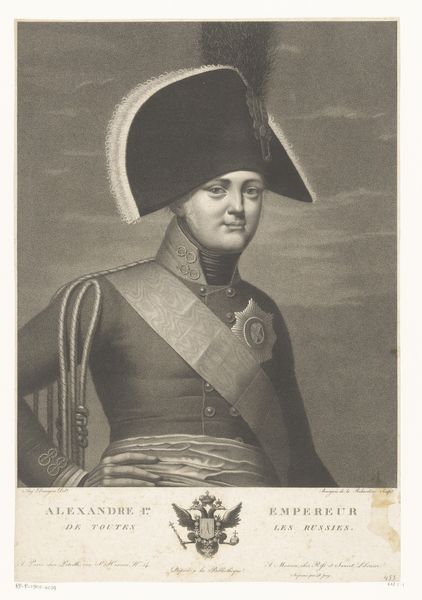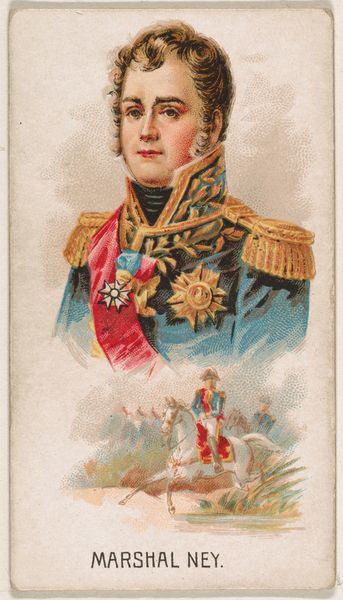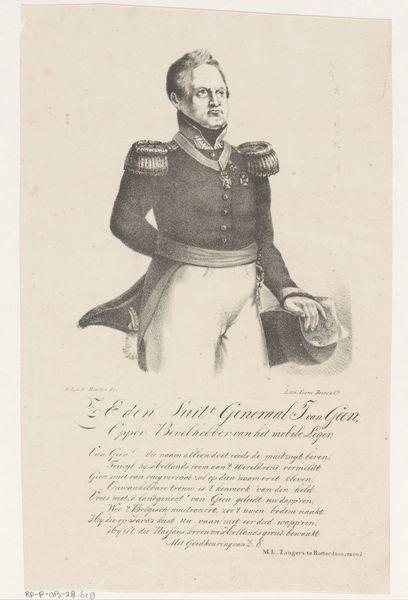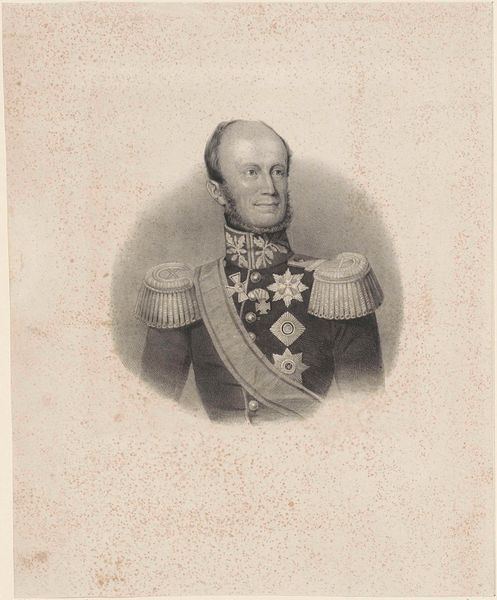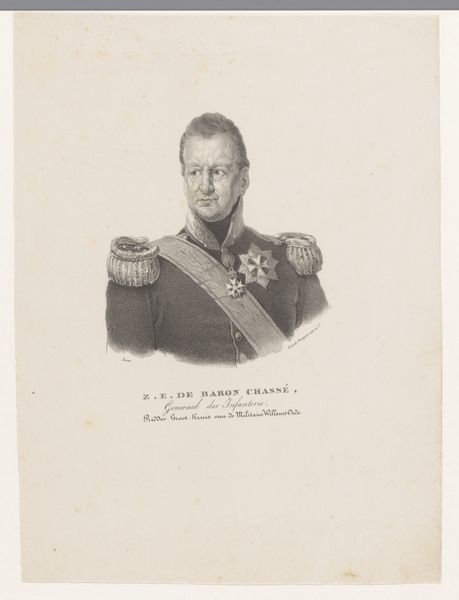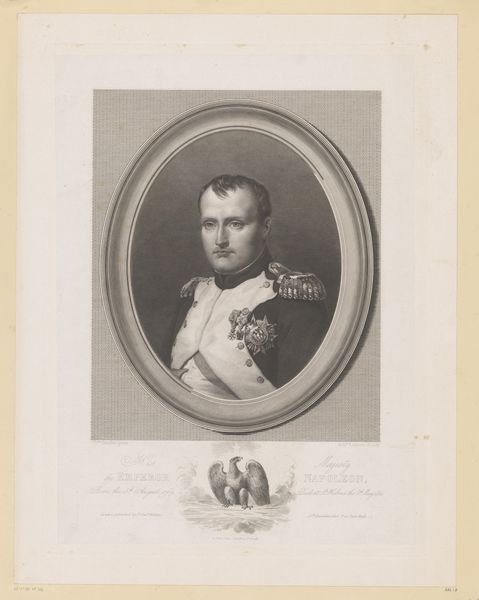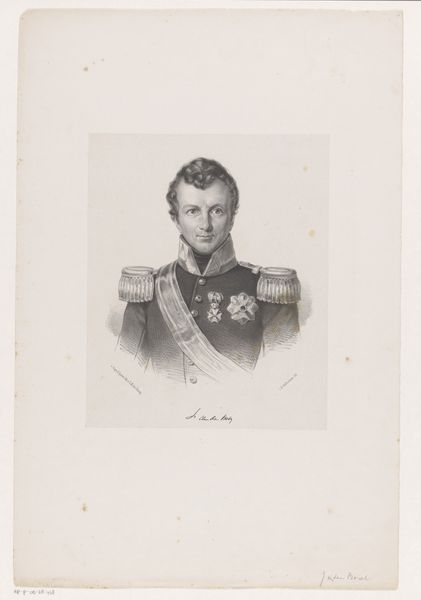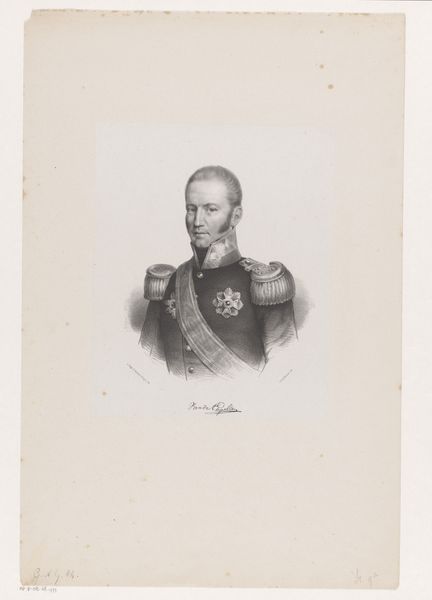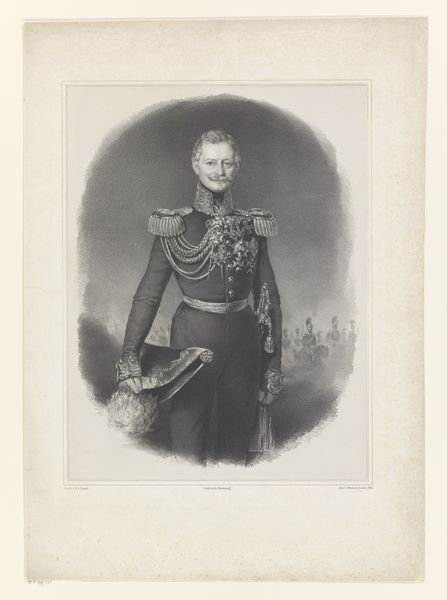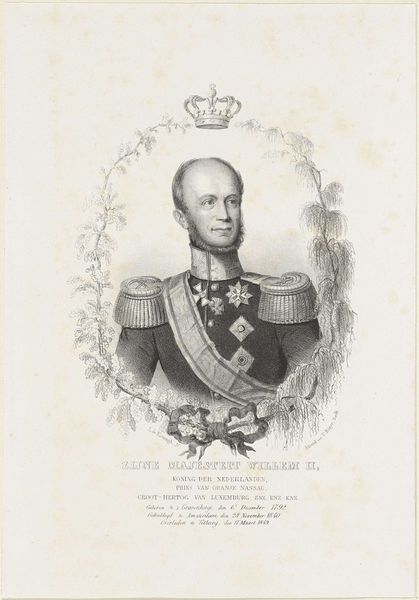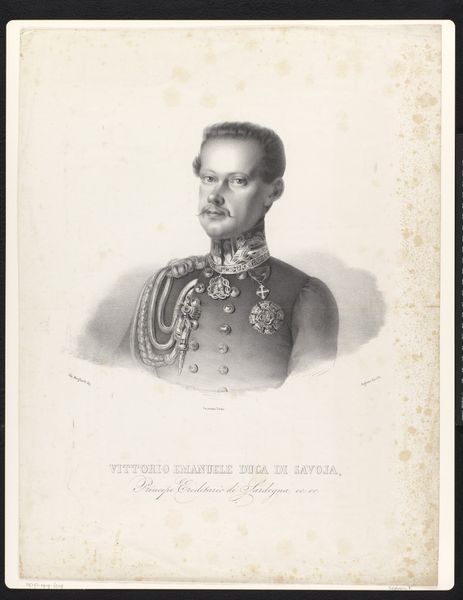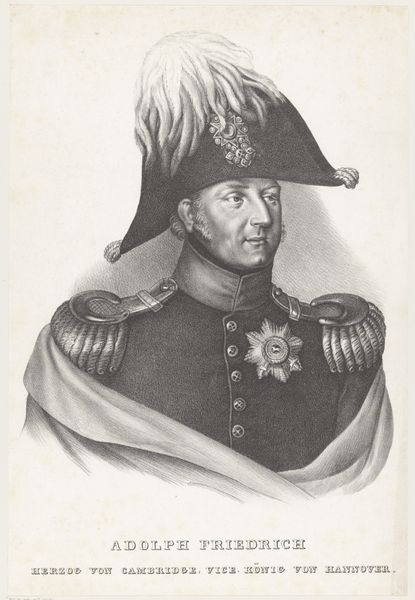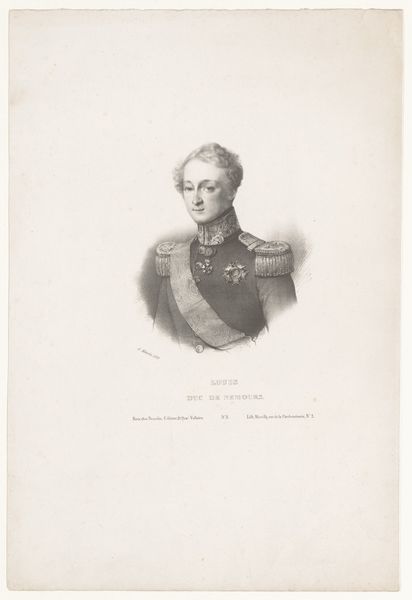
drawing, print, pencil, engraving
#
portrait
#
drawing
#
neoclacissism
#
16_19th-century
# print
#
pencil sketch
#
old engraving style
#
pencil
#
19th century
#
pencil work
#
history-painting
#
engraving
Dimensions: height 340 mm, width 226 mm
Copyright: Rijks Museum: Open Domain
Curator: Looking at this portrait, I immediately see an image of power and perhaps even, dare I say, an attempt at intimidation? The stern gaze, the elaborate military attire, and the sheer size of that hat... it's quite imposing. Editor: Indeed. What we're observing here is "Portret van Constantijn Pavlovitsj van Rusland," created in 1825 by Auguste Foucaud. It's an engraving, likely based on a drawing, showcasing Grand Duke Constantine Pavlovich, a figure of significant, albeit controversial, political influence during that period. Curator: Controversial how? His story adds another layer to how we perceive this image. Editor: Constantine was initially the heir presumptive to the Russian throne. However, he secretly renounced his claim, paving the way for his younger brother, Nicholas, to become Tsar. The political instability surrounding this succession crisis certainly colored perceptions of Constantine, both then and now. The artist, I believe, had a great task to express this moment of the Grand Duke Constantine. Curator: Absolutely. Knowing that adds depth to understanding the artist's intent, and perhaps even Constantine's self-presentation. Was he aiming to appear powerful and decisive to counter any perceived weakness from relinquishing his claim? Editor: It is quite probable. Notice how Foucaud captured the details of his uniform, every medal and embellishment carefully rendered. The uniform wasn't just clothing, it was a symbol of Constantine’s status. How did it affect the Russian perception of power, that is what interests me? Curator: Right. The feather in the hat becomes a symbol of power and stature in this context. But for contemporary viewers, those very symbols can be interrogated, prompting questions about the legitimacy of power and the constructs of masculinity prevalent at the time. It becomes interesting for all ages and eras to come. Editor: Very insightful. By situating the image within its historical context, we can decode not just the overt messaging but also the underlying anxieties and power dynamics that shaped its creation and reception. This engraving offers insight into Russian history. Curator: Absolutely. It goes beyond a mere depiction; it’s a visual artifact laden with sociopolitical meaning, ripe for critical analysis. This will encourage viewers to continue thinking about it. Editor: And I'm so glad that we shared our historical lens today to analyze its intricacies.
Comments
No comments
Be the first to comment and join the conversation on the ultimate creative platform.
